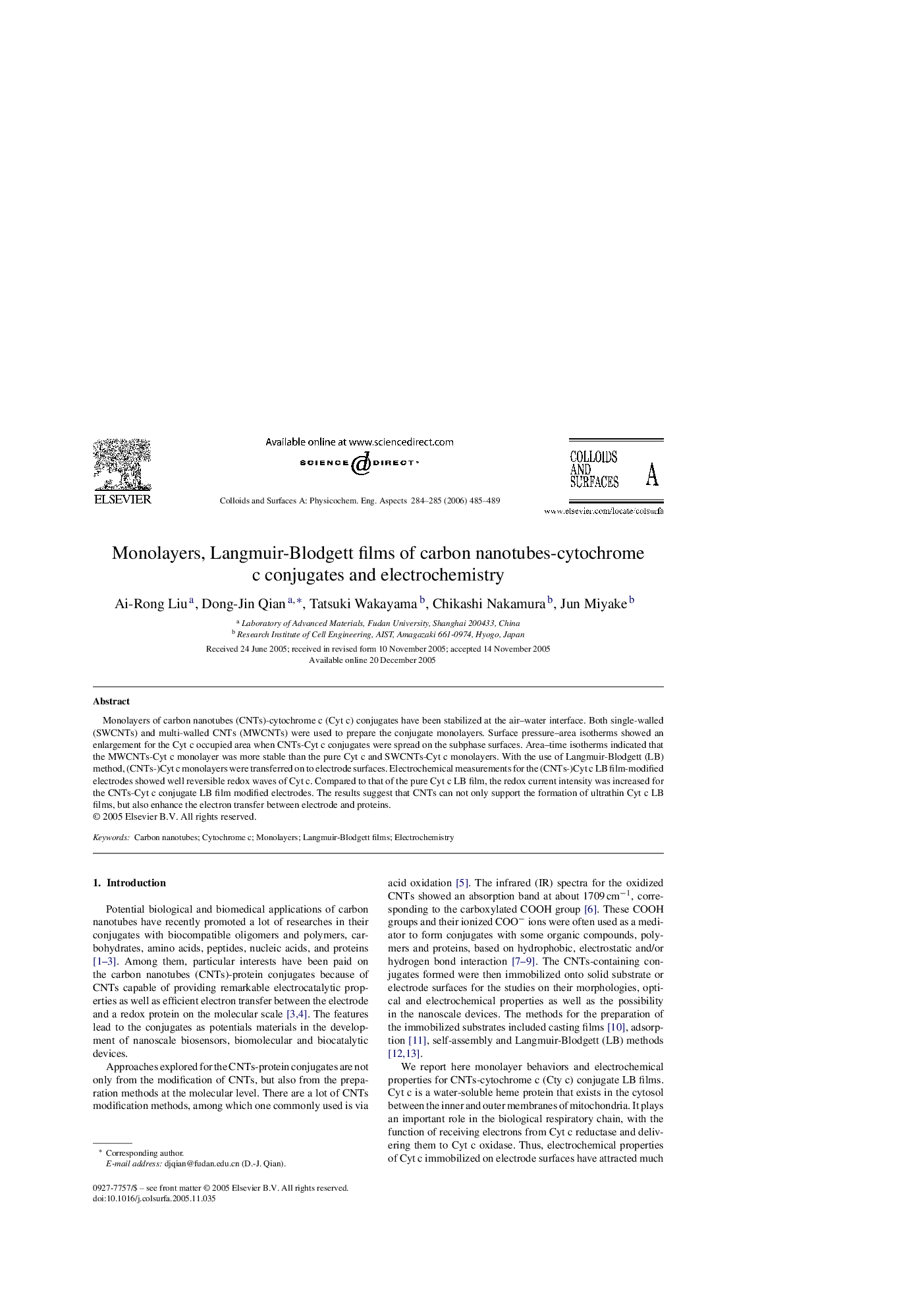| Article ID | Journal | Published Year | Pages | File Type |
|---|---|---|---|---|
| 598296 | Colloids and Surfaces A: Physicochemical and Engineering Aspects | 2006 | 5 Pages |
Monolayers of carbon nanotubes (CNTs)-cytochrome c (Cyt c) conjugates have been stabilized at the air–water interface. Both single-walled (SWCNTs) and multi-walled CNTs (MWCNTs) were used to prepare the conjugate monolayers. Surface pressure–area isotherms showed an enlargement for the Cyt c occupied area when CNTs-Cyt c conjugates were spread on the subphase surfaces. Area–time isotherms indicated that the MWCNTs-Cyt c monolayer was more stable than the pure Cyt c and SWCNTs-Cyt c monolayers. With the use of Langmuir-Blodgett (LB) method, (CNTs-)Cyt c monolayers were transferred on to electrode surfaces. Electrochemical measurements for the (CNTs-)Cyt c LB film-modified electrodes showed well reversible redox waves of Cyt c. Compared to that of the pure Cyt c LB film, the redox current intensity was increased for the CNTs-Cyt c conjugate LB film modified electrodes. The results suggest that CNTs can not only support the formation of ultrathin Cyt c LB films, but also enhance the electron transfer between electrode and proteins.
